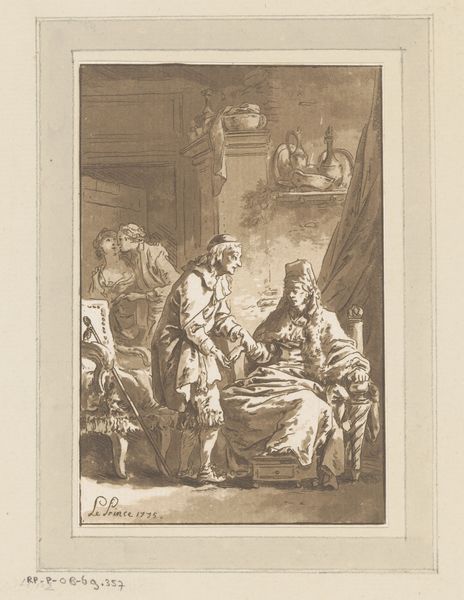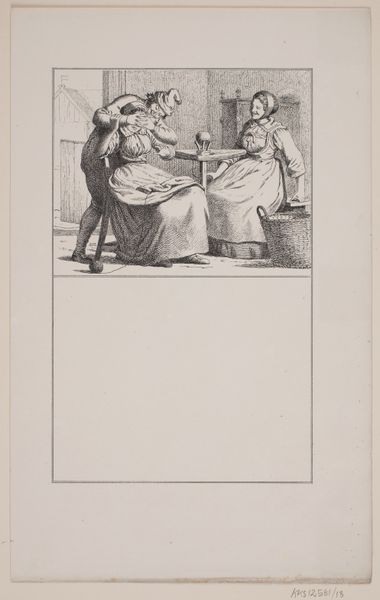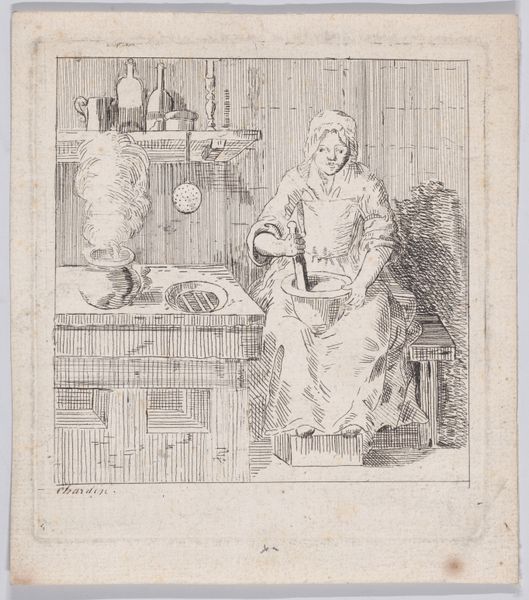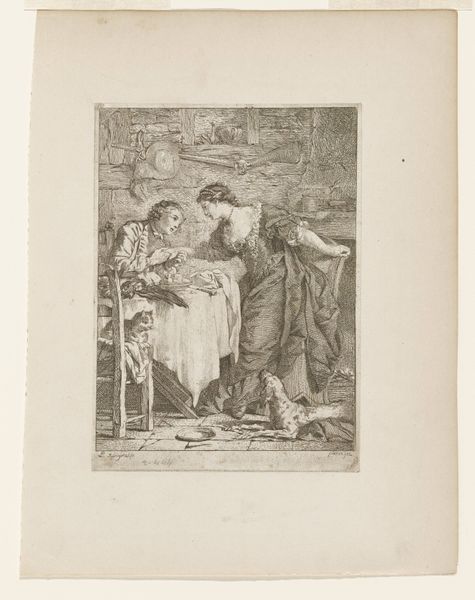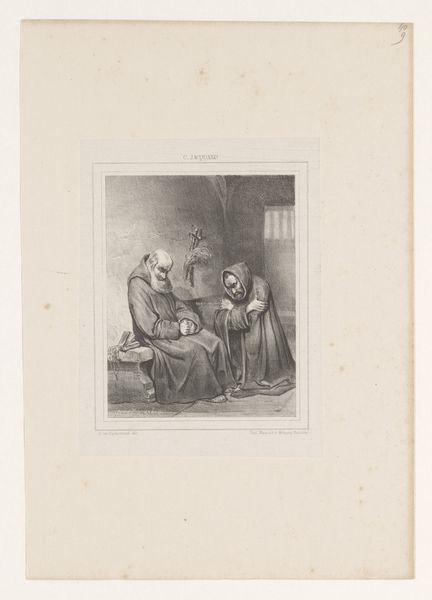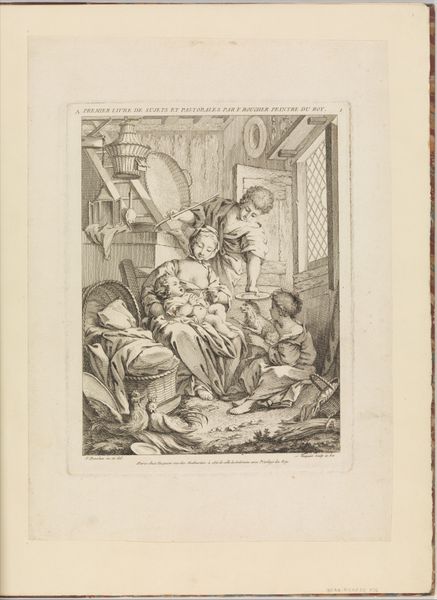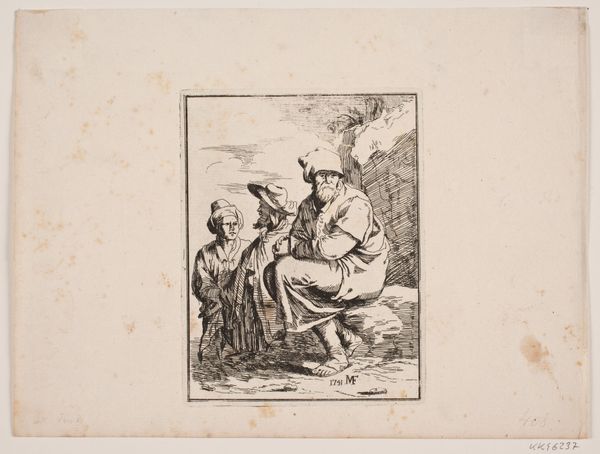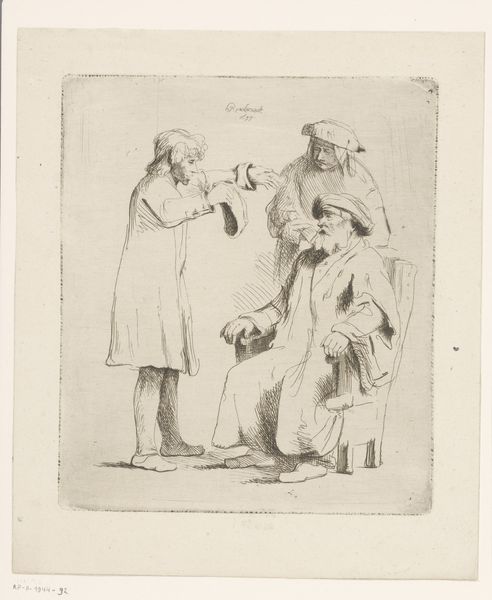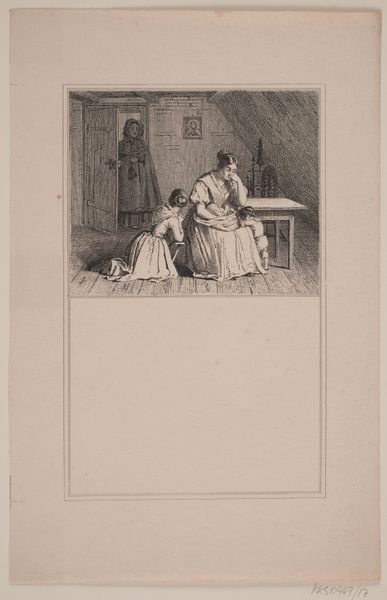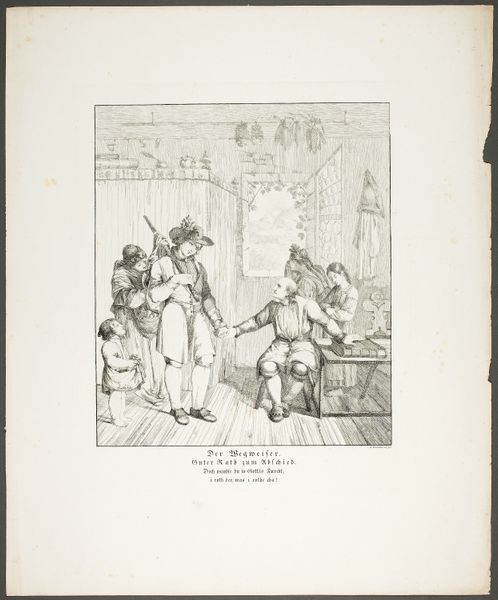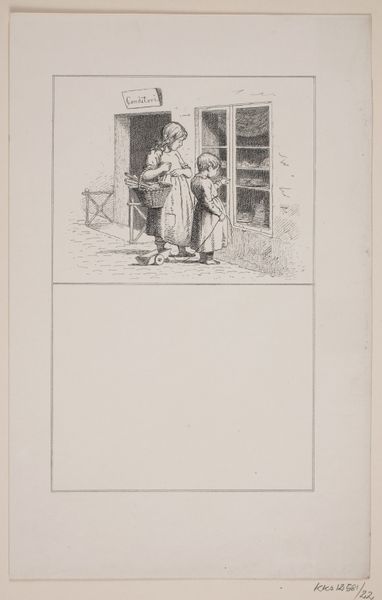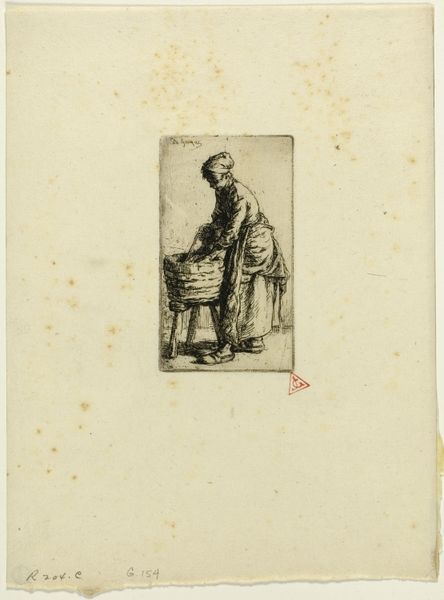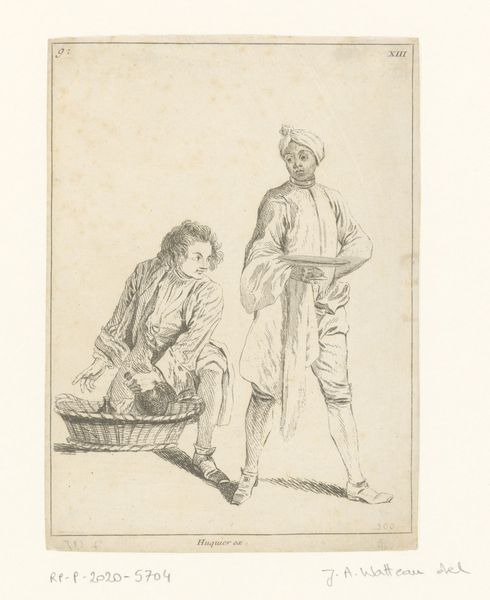
A Woman Spinning, Plate 4 from "Five Feminine Occupations" 1635 - 1657
0:00
0:00
drawing, print, engraving
#
portrait
#
drawing
#
dutch-golden-age
# print
#
figuration
#
genre-painting
#
engraving
#
realism
Dimensions: Plate: 8 3/16 x 6 1/2 in. (20.8 x 16.5 cm) Sheet: 11 5/16 x 8 5/16 in. (28.7 x 21.1 cm)
Copyright: Public Domain
Curator: This is "A Woman Spinning," plate four from the series "Five Feminine Occupations," made by Geertruydt Roghman between 1635 and 1657. Editor: There's a feeling of quiet concentration here. The whole composition, rendered in fine lines, seems to revolve around the spinning wheel, doesn’t it? Curator: Absolutely. Roghman has depicted this woman so thoughtfully, spinning thread with what I perceive as intense focus. What does the presence of that young girl add to this dynamic for you? Editor: It adds a layer of complexity, I think. While the woman spins, providing perhaps a necessity, the girl observes. Is she learning? Is she already resigned to this life? The future isn't a field of dreams but another seat in a circle, making textiles by hand. Also, is she literally trapped in the corner or the corner defined by the seated girl in white attire? Curator: An excellent point, questioning whether the girl is being trained and the piece a broader look into labor. Considering that it’s part of a series dedicated to feminine occupations, one could interpret it as a commentary on the roles women held. But I am fascinated by her stillness, she's a void that lets my imagination run loose in this busy family of gestures! Editor: Roghman, as a woman artist herself, brings an interesting perspective to this portrayal of domestic labor. We should consider the history of Dutch Golden Age art. Genre scenes, depicting everyday life, became increasingly popular. This print enters that historical context, celebrating but also questioning the constraints placed on women. The tools scattered on the floor speak of maintenance, not invention. Curator: It’s true. This engraving invites so many avenues of thought—craftsmanship, gendered labor, societal expectations. Editor: And as we close, one last point. There's a subtlety here; the artist invites the viewer into this private, seemingly ordinary space to see both an image and a symbol for endless questions and observations.
Comments
No comments
Be the first to comment and join the conversation on the ultimate creative platform.
